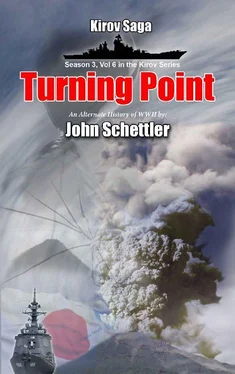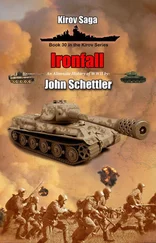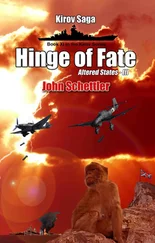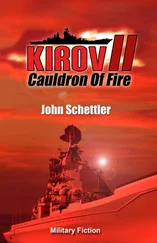Food would freeze on the short hauls from division mess kitchens to the men on the lines, leaving the troops icy bowls of frozen lumps to eat. Frostbitten feet swelled in the boots unless socks were changed regularly to keep them dry, a most uncomfortable task. Without adequate heavy winter clothing or boots, the troops, and horses they relied on to move heavy equipment, suffered terribly. Throughout the lines, more casualties were reported from frostbite than anything else, sometimes as many as 800 per day in a given division. Frostbitten cheeks, ears, noses hands and feet were the norm, and over 1.5 million horses would die that winter from wounds, cold, lack of food, and exhaustion. In such conditions, any shelter, even that of a few buildings in an isolated farm, became extremely desirable, and towns and villages were fought over with any strength remaining on either side.
In such conditions, mounting regular patrols and recon operations was near impossible. The thick white blanket of snow covered every landmark, transforming the terrain into a uniform carpet where the troops could easily lose their sense of direction and wander off, particularly when snow blizzards reduced visibility to near zero. The troops that could move identified the proximity of a village by listening for the sound of birds that would aggregate and roost there.
Out in the long lines of the infantry divisions, it was often so cold that the bolt action rifles froze when it was found that the grease used in them was not frost resistant. Soon many machineguns became useless beneath layers of ice. Trenches could not be dug into the hard frozen ground, so troops in the field had only snow bunkers, long icy tunnels stretching through the sea of white. Against enemy artillery fire, it offered no protection at all, so the men began melting segments of the snow to try and re-freeze them to harder ice for some modest protection against small arms and shrapnel. Even a minor wound in such circumstances could become an easy death sentence.
Troops that attempted movement in the deep snow, sometimes over twenty inches, soon became utterly exhausted. It was here that the winterized Siberian divisions, dressed in warm white parkas and with a high number of ski troops, truly excelled. They had mobility, and could infiltrate through gaps in enemy lines, encircling positions and further complicating any defensive reaction to the attack. The Soviet tanks, with higher ground clearance and much wider tracks, became the most mobile force available, yet they often blundered into near invisible German infantry positions, and units who were able to fire the new Panzerfaust weapon exacted heavy tolls on the enemy.
When it did finally come, the Russian attack had one major aim—cut the Germans off in their effort to secure the remains of Moscow and consolidate for any further operations. In the east, every available unit was thrown against the German defense on the long line of the road from Serpukhov to Tula and down through Orel, backed up by strong reserves finally arriving from rear areas. They did not have far to go, for in many places, the Germans being obsessed with their drive north, the road and rail was buffered by no more than ten or fifteen kilometers behind a thin line of infantry outposts. Even though movement along that corridor was limited by the awful weather, the Soviets nonetheless struck both north and south of Tula, and at all the places the Germans had fought for so bitterly on Guderian’s drive—Gorbachevo, Chern, Mtsensk and the principal attack aimed at the city of Orel.
Dmitri Lavrinenko was in on this attack, his 4th Tank Brigade fleshed out by newly arrived T-34s. As always, he moved with purposeful determination, cutting the road north of Tula in a drive that would eventually force some hard decisions on the Germans.
“The infantry will be following us, right in the hardened snow packed down by our tank treads,” he said. “We will make a particular effort to secure any small tree lines or woods where they can then form up for a major ground attack.” He would have the services of two rifle divisions behind him, and in places where there would be no covering terrain, these troops would begin to dig snow tunnels towards the enemy positions, their long, icy cold fingers reaching for the German troops already near frozen on the open exposed ground.
In places, the Soviets paid a high price for these attacks. Where the Germans could keep their machineguns operating, the casualties were very heavy in the first wave of any attack. Then the second wave would come forward, right over the dead and slowly freezing bodies of their fallen comrades, using them as a means of getting forward faster, and even falling to the ground behind the dead to use them as a shield from enemy fire. It was a cold, ghastly business, with the white snows stained red with blood on both sides. Five, then seven, or even ten waves of infantry would continue forward like this, until the manpower of the attacking Rifle Division was simply exhausted. Then a new rifle division would form up to roll forward over that grisly trail of death, and continue the relentless attack.
Since the German defensive doctrine saw the infantry clustered around farms and hamlets, creating an archipelago of strong points, there were deliberate gaps in the line through which the enemy infantry infiltrated, particularly the Soviet ski troops. They were aided by small partisan units, rising up from ungarrisoned towns behind the German lines, and raising havoc. At times, a mounted cavalry unit provided more mobility than any motorized formation, and these units, the hardy Siberian horsemen, swept through the lines like ghostly vapors. Some of these units even pulled sleighs laden with more infantry to bolster their attacks. Not having the benefit of roads and vehicles over decades of hard life in the cruel Siberian winters, these troops were well adapted, and knew how to move in these harsh conditions, the old fashioned way.
In the beginning the Germans thought these thrusts were merely massive spoiling attacks to try and close the major line of communications up to Serpukhov. Orel was the first real crisis point. There the Soviets threw the weight and mass of three full shock armies in an all out drive to break through and reach Bryansk. Once the extent of this attack was realized, the Germans finally knew this was much more than they expected from a foe they thought was already beaten.
The aim and scope of the attack was truly ambitious. Since so many German troops had been diverted to the drive on Moscow, the massive “Kirov Pocket” still remained encircled, shaped like a huge rib eye steak well behind German lines. The Soviets still held Bryansk at the bottom, Kirov at the center, and terrain stretching fifty to eighty kilometers from there in all directions. The Germans, thinking the fall of Moscow would result in enemy capitulation, never pressed any real concerted attack to reduce this pocket, largely because they kept pulling forces off the perimeter to support their drive on Moscow. Now the Soviets were going to attempt to reach these beleaguered troops from both sides of the battlefield.
The main drive was the attack aimed at Orel, which simply overwhelmed the defense, breaking through like a flood tide of Red Army soldiers. Though it moved slowly, the Russian advance was inexorable, and left small islands of resistance behind at both Gorbachov and Metsensk. The former town would have been lost if not for the timely intervention of the new 103rd Panzer Brigade, fresh off the train just before the attack, and with good operational vehicles. It joined elements of 29th Motorized and 4th Panzer Division, and shored up a shoulder of defense that marked the southern end of the German line near the breakthrough.
The Soviets cut the main road at Chern to the south, and then completely surrounded the 267th Infantry Division huddled around Mtsensk. The breakthrough pushed all the way to Bolkov behind the German lines where Von Schweppenburg had his headquarters. Both he, and then Guderian himself, with the entire army command staff, had to leap onto any vehicle they could get running and flee north. Hit by the main weight of the attack, Orel could not be held, and a massive gap opened in the line over a hundred kilometers wide. Soon 18th Panzer Division was another small island surrounded south of Orel, as were the remnants of the 167th Infantry Division.
Читать дальше












